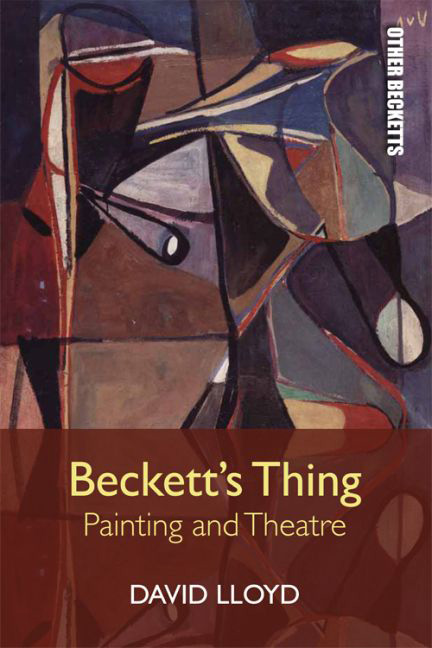Book contents
- Frontmatter
- Contents
- List of Figures
- Acknowledgements
- Other Becketts: Series Preface
- Introduction: The Painted Stage – Beckett's Visual Aesthetics
- 1 Republics of Difference: Yeats, MacGreevy, Beckett
- 2 Beckett's Thing: Bram van Velde and the Gaze
- 3 ‘Siege laid again’: Arikha's Gaze, Beckett's Painted Stage
- Conclusion: The Play's the Thing
- Bibliography
- Index
1 - Republics of Difference: Yeats, MacGreevy, Beckett
Published online by Cambridge University Press: 10 May 2017
- Frontmatter
- Contents
- List of Figures
- Acknowledgements
- Other Becketts: Series Preface
- Introduction: The Painted Stage – Beckett's Visual Aesthetics
- 1 Republics of Difference: Yeats, MacGreevy, Beckett
- 2 Beckett's Thing: Bram van Velde and the Gaze
- 3 ‘Siege laid again’: Arikha's Gaze, Beckett's Painted Stage
- Conclusion: The Play's the Thing
- Bibliography
- Index
Summary
Samuel Beckett's long personal and critical engagement with the Irish painter Jack B. Yeats provokes from the outset two puzzling observations: first, virtually every important study of Yeats invokes Beckett's testimony to the artist's singular greatness. There is nothing peculiar in that: Beckett's are eloquent and authoritative statements, for reasons that often have to do more with his stature than with the attention paid to his insights. Yet sketchy as Beckett's statements are, the accounts that invoke his authority make little effort to elaborate or to engage with the writer's quite idiosyncratic and solitary apprehension of Yeats's achievement and value. The invocation of the authority seems in no way to influence the approach to the paintings. Second, and no less puzzling, given the present general acceptance of the singularity and originality of Yeats's painterly technique in his later work, is how rarely critics undertake the formal analysis of it. His most indefatigable curator, Hilary Pyle, gives us in her exhaustive and indispensable catalogues detailed accounts of each of the works reproduced, but even these remain essentially descriptive rather than analytical and are marked by the impressionistic, tonal vocabulary that has been the hallmark of Yeats criticism to date: ‘exuberant’, ‘ruminative’, ‘elated’, ‘sombre’, even ‘Wordsworthian’. Such impressionistic accounts of the paintings seek to render their undoubted force, but they do so at great cost. On the one hand, they do not pause to attend to the remarkable artifice, the compositional exactitude, of Yeats's most powerful work, giving instead an impression of Yeats's virtually naïve, notoriously untaught spontaneity in his medium. In related ways, Bruce Arnold's peculiarly extended emphasis on the youthful artist's childlike fascination with miniature theatres and paper boats eclipses attention to the mature artist's reflections, political or aesthetic, in a way that ultimately sells short the seriousness of his engagements. On the other hand, those impressionistic readings and the critics’ fascination with the apparent spontaneity of the artist's procedures foreclose all too rapidly on the almost belligerent orneriness of the paintings and the unabashed difficulty with which they refuse to resolve to the viewer's gaze.
- Type
- Chapter
- Information
- Beckett's ThingPainting and Theatre, pp. 27 - 84Publisher: Edinburgh University PressPrint publication year: 2016



